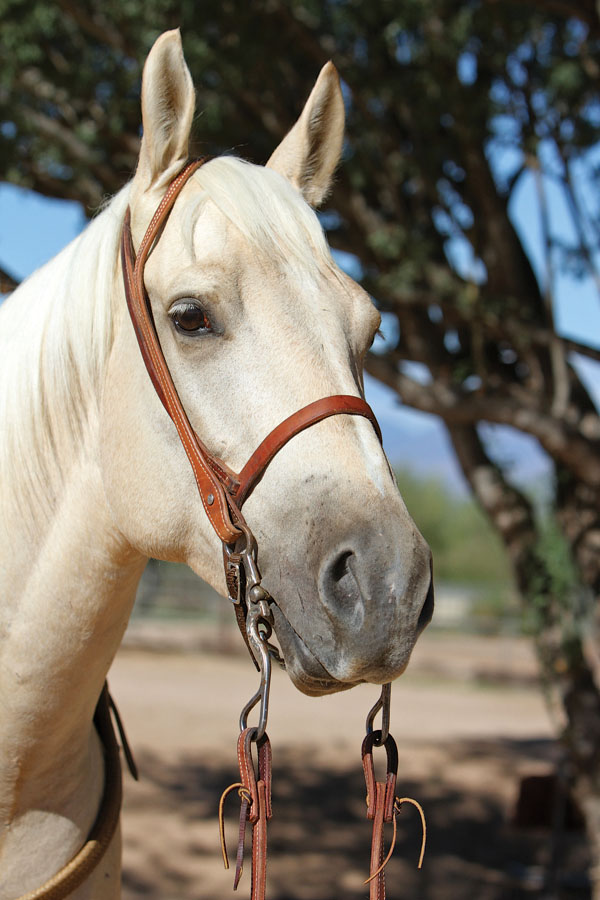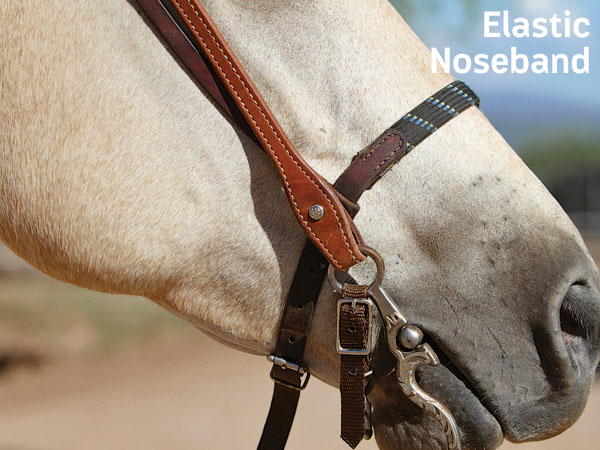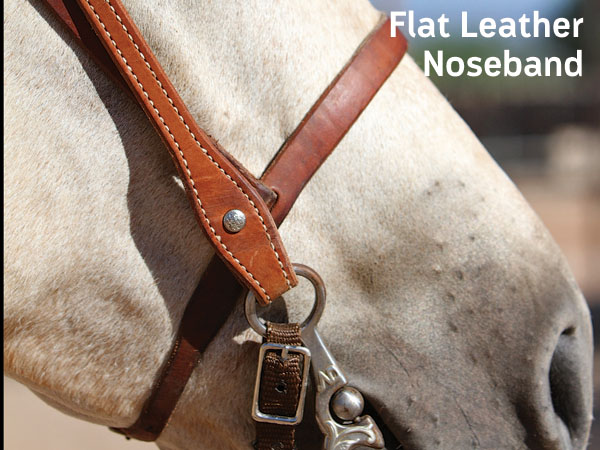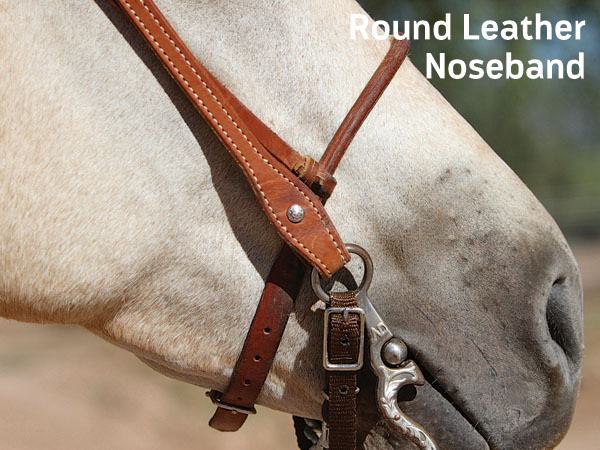A well-trained horse will respond to a bit while keeping his mouth closed. If he doesn’t, a cavesson may be used as a training tool to increase your horse’s acceptance of the bit and encourage better response. Placed beneath your bridle, a cavesson consists of a hanger and noseband, and provides just enough space for your horse to open his mouth, but not so much that he can avoid your riding signals. This teaches him to keep his mouth closed as he responds. He’ll learn to be more receptive to your signals, which will result in improved performance and an enhanced relationship between you and your horse. Remember, though, a cavesson is a training aid, and soft hands and sound horsemanship should precede its use.

Here you’ll learn how to properly fit a cavesson, then about a few styles available and how to care for them so you can best use this tool. Note: Your horse should be well broke and comfortable in the bit before this tool is used; it’s not to be used as a crutch for inadequate training.
Fit
To properly adjust your cavesson, move the buckle on the strap of the hanger up or down so that the noseband sits slightly above the bridge of your horse’s nose. A too-low noseband can inhibit his air passageway or make him feel trapped. Correct adjustment will ensure that the piece won’t interfere with, or bind to, the bit. The hanger should be adjusted vertically on his head so it’s comfortable and not too near his eyes.

The noseband may or may not be adjustable, depending on the style and material used. With a fixed noseband (such as a rawhide or rope piece, not pictured), make sure the circumference fits your horse’s nose first, and then adjust the hanger. For adjustable nosebands, make proper-fit adjustments using the buckle on the underside of the band. The noseband shouldn’t be so tight that your horse can’t open his mouth at all. For example, the “Flat Leather Noseband” photo (below-middle) shows a poorly fitted cavesson. The noseband is a little tighter, and the hanger a little higher than I prefer to see. Instead, the noseband should be fitted more similarly to the “Round Leather Noseband” photo with enough freedom beneath his jaw that he can make a mistake. A good rule of thumb is to provide a finger-width space between your horse’s face and the noseband, and even more room when you’re first introducing the cavesson.
Styles
A cavesson is made up of two parts: the hanger and the noseband. The hanger is made of soft, latigo-type leather, while the noseband can be found in various materials. Typically it’s comprised of a single piece of material.

When choosing the appropriate style and material, first determine the level of reinforcement that’ll be most effective for and acceptable to your horse. And then, get to know his preference.
Elastic is a lighter material option for a horse that’s a little intimidated by a cavesson. It’s a combo piece that features elastic on the bridge of his nose and leather underneath, and is a mild reminder to him to keep his mouth closed and not resist the bit. Even if this noseband’s adjusted a little snugly against your horse’s nose, the elastic has give, so he won’t feel trapped.
Leather is the most common material used and is available in different thicknesses and shapes. It’s durable, easy to maintain, and has the best look. It’s found in flat and round versions. A flat noseband is the mildest cavesson option. Unlike elastic, it needs to be adjusted around his nose more loosely, but it has less give, so he’ll still be reminded to keep his mouth closed. A round noseband has more reinforcement than either the flat leather or elastic noseband. The feel is similar to a bosal, so a horse that’s been ridden in a two-rein setup will likely feel most comfortable in it.

Rawhide and nylon are stiffer options with more traditional looks. They’re often not adjustable and can be found entirely rawhide (or nylon or rope) or mostly rawhide with leather covering along the bridge of the nose. The stiffer construction delivers a stronger reinforcement and should be even more carefully adjusted so as to not cause your horse to feel constrained or to excessively rub his nose.
Care
Because cavessons aren’t an everyday riding item, they tend to last when well cared for. Regularly brush or wipe off, and keep leather pieces oiled to ensure that they stay supple. If the hanger or noseband becomes hard or cracked, or if the buckle becomes difficult to adjust, replace these pieces. Otherwise, cavessons are long-lasting items and rarely need replacement.
Al Dunning, Scottsdale, Arizona, has produced world champion horses and riders in multiple disciplines. He’s been a professional trainer for more than 40 years, and his expertise has led him to produce books, DVDs, and his own online mentoring program, Team AD International (teamadinternational.com).






